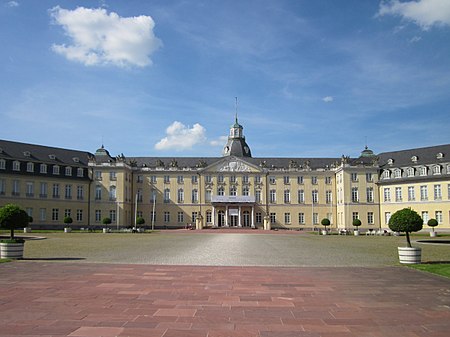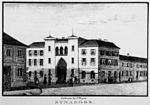Badisches Landesmuseum
1919 establishments in GermanyBadisches LandesmuseumEgyptological collections in GermanyHistory museums in GermanyKarlsruhe ... and 2 more
Museums in Baden-WürttembergTourist attractions in Karlsruhe

The Baden State Museum (German: Badisches Landesmuseum) in Karlsruhe is the large cultural, art and regional history museum of the Baden region of Baden-Württemberg . With its globally significant collections, representing more than 50,000 years of international cultural history, it conveys history and historical living environments. Its collections range from prehistory and early history to the Middle Ages and the 21st century. The museum was founded in 1919 and opened in 1921 in the rooms of Karlsruhe Palace.
Excerpt from the Wikipedia article Badisches Landesmuseum (License: CC BY-SA 3.0, Authors, Images).Badisches Landesmuseum
Schlossbezirk, Karlsruhe Innenstadt-West
Geographical coordinates (GPS) Address Nearby Places Show on map
Geographical coordinates (GPS)
| Latitude | Longitude |
|---|---|
| N 49.0136 ° | E 8.4044 ° |
Address
Schloss Karlsruhe
Schlossbezirk 1
76131 Karlsruhe, Innenstadt-West
Baden-Württemberg, Germany
Open on Google Maps











